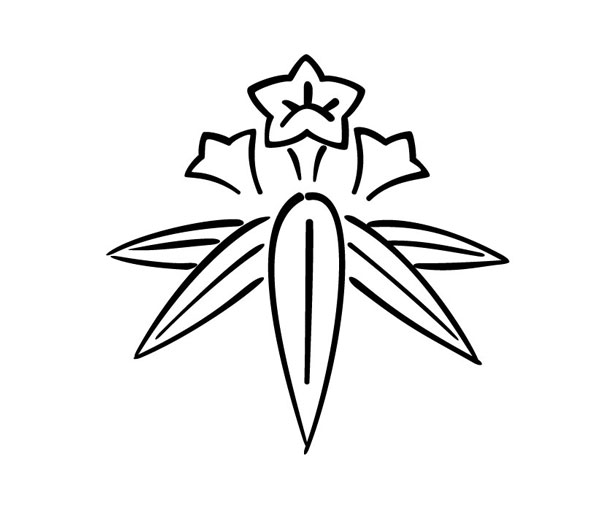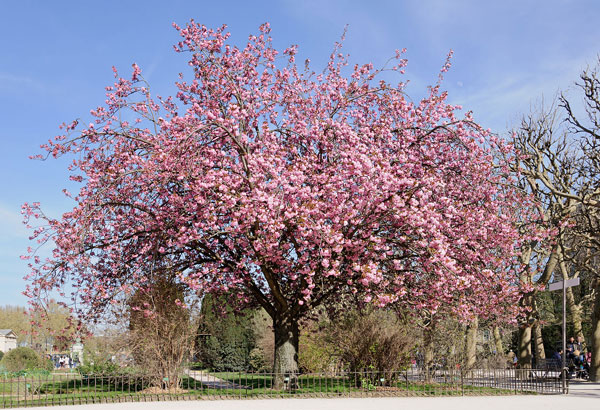KAMAKURA
Kamakura is an ancient capital surrounded by verdant mountains and bordered by the sea, which thrived during the Kamakura period (1185-1333) as the political center of Japan. You'll find numerous historical temples and shrines adorned with flower-filled gardens in every season. The picturesque scenes that unfold during the hydrangea blooming season in June, as well as the stunning red leaves in autumn, are particularly impressive.
Kamakura is considered one of Japan's "historic cities," alongside Kyoto and Kanazawa, but its appearance is somewhat different. Fascinating contrasts can also be observed between the two historical capitals of Kamakura and Kyoto; Kamakura bears traces of samurai culture, while an aristocratic atmosphere persists in Kyoto. The samurai practiced Zen Buddhism, which is why Japan's first Zen temple, Kencho-ji Temple, was built in Kamakura. This majestic temple, along with many other places in Kamakura, showcases the austere and elegant beauty of the Japanese tradition called "wabi-sabi".
Kamakura is also a city with a deep and rich culture. Many scenes from classical Japanese literature are based in Kamakura. The city is highlighted in Yukio Mishima's "Spring Snow" and Soseki Natsume's "Kokoro." Many other writers such as Yasunari Kawabata, Ryunosuke Akutagawa, and Seishu Tachihara have roots in this ancient city.
Additionally, many contemporary television series, films, and animations are based in Kamakura. If you're an anime enthusiast, you can experience an "anime pilgrimage" tracing the footsteps of your favorite creators and works. Many industry giants live in Kamakura. Hideaki Anno's house, famous for "Evangelion," has been open to the public. Writer Eiko Kadono, of "Kiki's Delivery Service" (animated by Studio Ghibli), energetically works in the city of Kamakura and regularly appears at the "Kamakura Book Carnival" held annually.
A magical festival takes place every summer where hundreds of lanterns gently illuminate the path to Tsurugaoka Hachimangū Shrine, some of which are signed by hand by major celebrities.
Kamakura is recognized as a major tourist destination, but it is also highly ranked as a residential area due to its pleasant climate and convenience. It takes only about an hour to reach the center of Tokyo by train (Yokosuka Line). Living in Kamakura is highly desirable as it is a place where residents can enjoy a morning swim in the ocean before heading to work.
FEATURES
- Population: approximately 174,161 inhabitants (April 2012)
- Area: 39.53 km²
- Climate:
Average annual temperature of 16.7℃
Average annual humidity of 79.7% - Number of national treasures and cultural properties: 216 (May 2015)
- Annual number of tourists: approximately 21,000,000
- City flower: Japanese gentian
- City tree: Hill cherry
- Twin cities: Nice (France), Dunhuang (China)


WEATHER
ACCESS TO KAMAKURA STATION
◎From Narita Airport (TYO/NRT)
[By train]
- Take the JR Narita Express line to Ofuna Station. Change to the JR Yokosuka line to Kamakura Station. (about 2 hours)
- Take a direct JR line (Narita line / Yokosuka line) to Kamakura Station. (about 2 hours 30 minutes)
[By bus]
- Highway bus operated by "Keisei" Take the highway express bus (Tokyo Shuttle) to Tokyo Station. Change to the JR Yokosuka line to Kamakura Station. (2 to 3 hours depending on traffic)
- Shuttle bus operated by "Airport Transport Service" Take the shuttle to YCAT (Yokohama City Air Terminal). Change at Yokohama Station to the JR Yokosuka line to Kamakura Station. (2 to 3 hours depending on traffic)
◎From Haneda Airport (TYO/HND)
[By train]
- Take the Keikyu line to Yokohama Station. Change to the JR Yokosuka line to Kamakura Station. (about 55 minutes)
RECOMMENDATIONS
Here is the map of the points of interest in Kamakura that we recommend:





